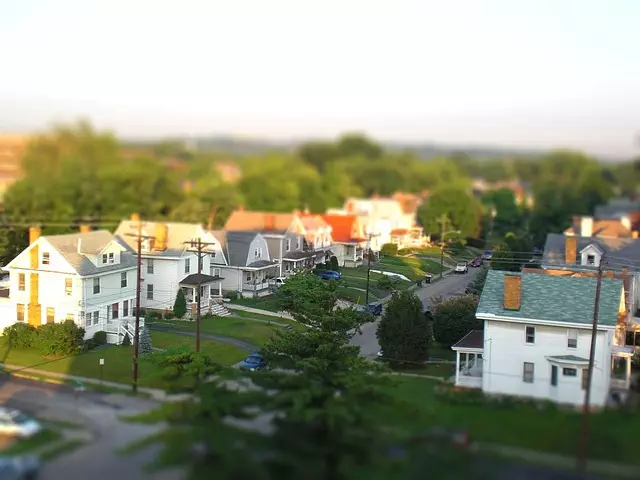Residential foundation cracks, caused by various factors like soil settlement, hydrostatic pressure, and shifting ground, range from superficial to severe structural problems. Early detection through regular visual inspections or advanced technologies like thermal imaging and GPR is vital. Prompt action by professionals ensures the structural integrity of homes, preventing minor cracks from escalating into costly repairs. Non-invasive methods offer safe, cost-effective alternatives for assessing and fixing foundation issues. Preventative measures include proper drainage, waterproofing, soil reinforcement, and polymer injections to enhance foundation stability and durability. Cost-effective repair solutions like epoxy injection and polymer-based products can significantly avoid future extensive repairs.
Foundation cracks in residential structures are not only unsightly but can also signal deeper structural issues. Understanding the common causes of foundation damage, such as soil shifts and poor construction, is crucial for early detection. This article guides you through various aspects of residential foundation repair, from visual inspections to advanced technology, non-invasive assessment methods, and expert involvement. Learn about preventative measures and cost-effective solutions to mitigate crack development, ensuring the longevity of your home’s foundation.
Understanding Foundation Cracks in Residential Structures

Foundation cracks in residential structures can range from mere aesthetic concerns to serious structural issues that require immediate attention. These cracks, often appearing as thin lines or wider gaps on the foundation walls, are a result of various factors such as soil settlement, hydrostatic pressure, and shifting ground conditions. Identifying these cracks early is crucial for effective residential foundation repair. Homeowners should be vigilant about observing any signs of shifting in their homes, including doors that stick or uneven floors.
Regular inspections can help catch minor cracks before they escalate into significant problems. Professional assessment by structural engineers or experienced contractors is beneficial to determine the severity and cause of the cracks. Prompt action is key; ignoring foundation cracks may lead to more complex and costly repairs as time goes on, impacting the overall structural integrity of the residence.
Common Causes of Foundation Damage

Foundation cracks can be a result of various factors, each requiring specific attention during residential foundation repair. One of the primary causes is ground movement due to shifts in soil composition or hydration levels. Expansion and contraction of the earth’s surface can put immense pressure on foundations, leading to cracks over time. Another common issue is structural instability stemming from improper construction practices or changes in load bearing capacity. Uneven settling, often caused by poor drainage or nearby excavations, can cause noticeable cracks.
Water intrusion is also a significant contributor to foundation damage. Moisture seepage can weaken the structure, especially in regions with high humidity or near water sources. Continuous exposure to water can lead to degradation of concrete and other building materials used in residential foundation repair. Lastly, extreme temperatures and weather conditions, such as heavy rainfall or prolonged droughts, can accelerate the aging process of foundations, making them more susceptible to cracks.
Visual Inspection: Identifying Early Signs of Cracking

A visual inspection is a crucial initial step in identifying potential foundation cracks, especially for those concerned about residential foundation repair. Homeowners should familiarize themselves with the basics of structure assessment to catch early signs of distress. Cracks in foundations can range from hairline fissures to larger gaps, and they often appear as vertical or horizontal lines on walls, floors, or ceilings. These visible indications are red flags that something may be amiss beneath the surface.
Regularly examining the exterior and interior of a home for any unusual cracks is an excellent preventive measure. For instance, checking for cracks in foundation walls, floors, or doors can help detect minor issues before they become costly repairs. Homeowners should also pay attention to uneven floors, sticking doors, or windows that don’t close properly, as these could be signs of foundational movement, often indicated by subtle cracks.
Advanced Technology for Accurate Crack Detection

In the realm of residential foundation repair, advanced technology plays a pivotal role in ensuring accurate crack detection. Modern methods go beyond traditional visual inspections, employing sophisticated tools and techniques to uncover even the subtlest signs of structural compromise. One such innovation is thermal imaging, which detects temperature variations, highlighting areas where cracks may be present but invisible to the naked eye. This non-invasive approach is particularly valuable for early identification of foundation issues.
Additionally, ground-penetrating radar (GPR) has emerged as a game-changer in foundation crack detection. GPR sends radio waves into the soil and concrete, creating detailed images of underground structures. This technology can pinpoint cracks and other anomalies with remarkable accuracy, enabling professionals to recommend targeted repairs for residential foundation repair needs. By leveraging these advanced technologies, homeowners can rest assured that potential issues are addressed promptly, minimizing further damage and costs associated with extensive foundation repairs.
Non-Invasive Methods for Foundation Repair Assessment

Non-invasive methods have revolutionized the way we assess and repair residential foundation issues. These techniques offer a safe, cost-effective, and efficient alternative to traditional invasive inspections. One such method is ground-penetrating radar (GPR), which uses electromagnetic waves to create detailed images of underground structures. By sending signals into the soil, GPR can detect variations in material properties, highlighting potential cracks or anomalies in the foundation. This technology is particularly useful for assessing hard-to-reach areas without causing any damage.
Another non-invasive approach is thermal imaging, which identifies temperature variations on the surface of a structure. Foundation cracks often allow water and air to infiltrate, leading to localized temperature changes. By analyzing these patterns, experts can pinpoint problem areas that may require residential foundation repair. This method provides a quick and non-disruptive way to assess the overall health of a foundation without breaking ground.
The Role of Experts in Comprehensive Foundation Analysis

When it comes to assessing and repairing residential foundation cracks, the expertise of professionals is invaluable. Foundation experts possess specialized knowledge and skills to conduct comprehensive analyses, ensuring every aspect of the foundation’s health is considered. They employ advanced techniques and tools to detect even the smallest cracks or signs of instability, which might go unnoticed by untrained eyes.
These experts are trained to interpret complex data and patterns in foundation cracks, enabling them to diagnose the root causes. By understanding the unique challenges posed by different types of construction and soil conditions, they can develop tailored solutions for effective residential foundation repair. Their involvement guarantees a thorough evaluation, leading to long-lasting and robust repairs.
Preventative Measures to Mitigate Foundation Crack Development

Preventing foundation cracks is a proactive approach to maintaining the structural integrity of any building, especially residential structures. Regular inspection is key; homeowners should schedule periodic assessments by professional contractors to identify potential issues early on. This involves visually examining the foundation for any signs of cracking, bulging, or shifting, as these could indicate underlying problems.
In addition to regular inspections, there are several preventative measures that can be taken. Proper drainage around the house is vital; ensuring water does not pool near the foundation helps prevent moisture-related damage. Additionally, implementing a robust waterproofing system, especially in areas prone to high humidity or rainfall, can significantly reduce crack development. Reinforcing the soil around the perimeter of the structure and applying advanced polymer injections are further strategies to enhance foundation stability and durability, thus mitigating the risk of residential foundation repair.
Cost-Effective Solutions for Residential Foundation Repair

When it comes to residential foundation repair, cost-effective solutions are not just about saving money but also about longevity and minimizing future damage. One of the most popular and affordable methods is epoxy injection, which involves injecting a specialized epoxy into cracks to fill them from the inside, preventing further erosion. This technique is not only quick but also highly effective, making it an excellent choice for homeowners on a budget.
Another cost-saving measure is using polymer-based products for crack repair. These flexible sealants can be easily applied over larger cracks and provide a durable barrier against moisture intrusion. By addressing foundation cracks promptly with these methods, homeowners can avoid more extensive and expensive repairs down the line.
